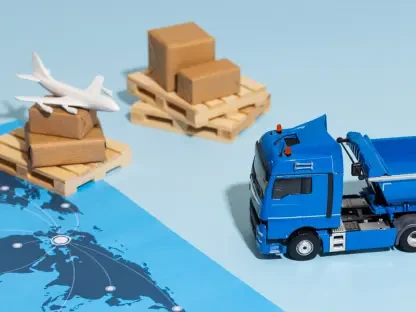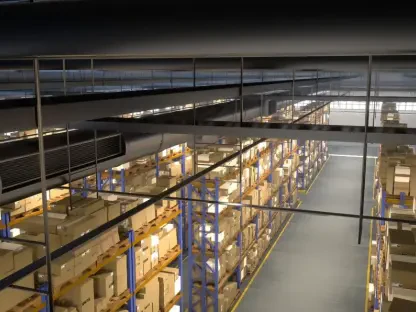Today, we have the pleasure of speaking with Rohit Laila, a seasoned expert in the logistics industry with a strong passion for technology and innovation in the sector. With decades of experience under his belt, Rohit offers invaluable insights into transportation policy and road safety. In this interview, we’ll explore the recent decision to allocate funds from road traffic fines to support a road safety campaign, the significance of having a designated fund for such initiatives, and the detailed plans of the campaign itself.
What prompted the decision to allocate funds from road traffic fines to support a road safety campaign?
The main motivation was the pressing need to enhance road safety awareness and reduce the high incidence of road accidents. By allocating funds from traffic fines, we aim to create a sustainable financial source specifically for road safety initiatives, ensuring consistent effort and impact over time.
Can you explain the significance of having a designated fund for a sustained road safety public education campaign?
A designated fund ensures that there are constant resources available to maintain and expand road safety campaigns. This dedicated pool of money allows us to plan long-term strategies rather than piecemeal efforts. Continuous education is key to changing driver behavior and reducing road accidents, and this fund is crucial in sustaining those efforts.
How did the idea of using a portion of road traffic fines for road safety initiatives come about?
The idea stemmed from recognizing the direct link between traffic violations and road safety issues. By redirecting a portion of the fines levied for these violations, we can reinvest in preventive measures and education, thus addressing the problem at its root. This approach not only penalizes offenders but also helps prevent future incidents.
What motivated you to propose this funding allocation to the Cabinet last year?
The motivation came from observing the persistent high rates of traffic accidents and the devastating impact they have on individuals, families, and society as a whole. It became evident that a more structured and well-funded approach was necessary to tackle these issues effectively. Proposing this allocation to the Cabinet was a strategic move to secure the necessary resources for a robust road safety campaign.
Previously, where did the funds from traffic tickets go before this new allocation to the Transport Ministry? How much of the funds went to the ministries of justice and national security? How much of the funds went to the Consolidated Fund?
Before this allocation, the funds from traffic tickets were distributed among the ministries of justice and national security, as well as the Consolidated Fund. A significant portion went to these areas, supporting various governmental functions. However, specific percentages varied, and exact figures for each allocation were not always clearly defined.
How much total revenue is expected to be allocated to the Transport Ministry for the road safety campaign?
Based on the data from 2024, where 585,000 traffic tickets were issued and 52 percent of those were paid, amounting to $1.5 billion, we anticipate that allocating five percent of this revenue would result in tens of millions of dollars. This substantial amount will significantly bolster the road safety campaign.
What role will public relations companies play in the new road safety campaign?
Public relations companies are expected to play a pivotal role in designing and executing the campaign. Their expertise in communication and media will help create impactful messages that resonate with drivers. They will work on developing comprehensive strategies, including vivid imagery and powerful narratives, to highlight the consequences of traffic violations and promote safer driving habits.
Why do you believe the campaign needs to go beyond slogans and jingles to be effective?
Slogans and jingles, while memorable, often fail to deeply impact behavior. To drive genuine change, the campaign needs to engage the emotions and conscience of drivers. By using real-life examples, vivid pictures, and compelling stories, we can create a more profound and lasting awareness of the serious consequences of reckless driving, thus leading to safer driving practices.
What specific strategies do you plan to use to impact drivers’ psyche and conscience?
The strategies will include using powerful visual representations of road accidents, personal stories from victims and their families, and statistical data on the impacts of road crashes. We aim to make the consequences of dangerous driving more tangible and relatable, fostering a deeper emotional response that encourages safer behavior on the road.
How do you intend to use vivid pictures and real-life examples to convey the consequences of road accidents?
Vivid pictures and real-life examples will be integrated into various media formats, such as television commercials, social media campaigns, and educational materials distributed in driving schools. Sharing authentic experiences and graphic illustrations of accidents can shock and awaken drivers to the harsh realities of unsafe driving, encouraging them to think twice before engaging in risky behavior.
Can you discuss the primary objectives of the road safety campaign?
The primary objectives are to reduce the number of road accidents, raise awareness about road safety, and educate drivers on the consequences of their actions. We aim to instill a culture of safe driving through continuous and impactful messaging, ultimately leading to fewer accidents and fatalities on our roads.
How will the campaign address the effects of road crashes on families, hospitals, and law enforcement?
The campaign will highlight the broad and devastating impact of road crashes, from the grief and trauma experienced by families to the burden placed on hospitals and law enforcement. Through testimonials, statistical data, and narratives, we will show how each accident has a ripple effect, stressing the importance of preventative measures to mitigate these repercussions.
What measures will be taken to ensure the campaign leaves a lasting impact on drivers and encourages safer driving habits?
We plan to use diverse and high-frequency messaging across multiple platforms to keep road safety top of mind for drivers. Additionally, we’ll collaborate with driving schools, and law enforcement, and run community-based programs to reinforce the campaign’s messages. Continuous evaluation and adaptation of the campaign strategies will also be key to ensuring its effectiveness over time.
How do you plan to measure the success of the road safety campaign once it is implemented?
Success will be measured through various indicators, including a reduction in road accidents and fatalities, increased compliance with traffic laws, and improved driver behavior as reported by law enforcement. Surveys and feedback from the public will also be used to gauge changes in awareness and attitudes towards road safety.
Do you have any advice for our readers?
My advice is to always stay vigilant and responsible when driving. Understand that your actions on the road can have far-reaching consequences. It’s crucial to follow traffic rules, stay focused, and be considerate of others. Safe driving is not just about protecting yourself but also about ensuring the safety of everyone on the road.









